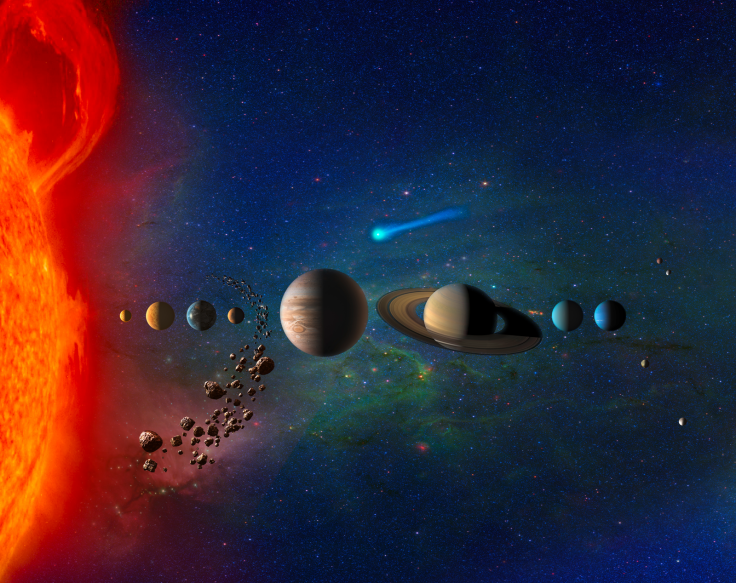Dwarf Planet Ceres Joins The Ranks Of Solar System's Most Interesting Places

KEY POINTS
- Researchers of a new study found Ceres is actually an ocean world
- It was previously believed to be a barren space rock
- Ceres now joins the ranks of some of the most interesting places in our solar system
A team of scientists reported the dwarf planet Ceres is actually an ocean world with salty water beneath its surface. Ceres now joins the ranks of other fascinating celestial objects in our solar system.
The largest object between Mars and Jupiter, Ceres was long believed to be a plain space rock in the asteroid belt. However, a new collection of studies based on data from NASA's Dawn mission recently discovered Ceres, in fact, has deep reservoirs of salt-enriched water.
Simply put, Ceres is actually an ocean world, much like some of the moons of Jupiter and Saturn. The Dawn data also showed the salt deposits had built up within the past two million years, suggesting the water activity was fairly recent.
As such, this once simple dwarf planet has become perhaps one of the most fascinating places in the solar system.
Naturally, all the celestial objects in the solar system have their own charm, but there are some that are more strikingly fascinating, the most iconic one being Saturn. It is the second largest planet in the solar system, and it is the only planet to have rings that make it exceptionally unique in the solar system.
"Few sights in the solar system are more strikingly beautiful than softly hued Saturn embraced by the shadows of its stately rings," NASA said in its description of a 2005 image of Saturn captured by the Cassini spacecraft.
Saturn's moon Titan is also just as exceptional as its host planet as it is the only one among the more than 150 moons in the solar system known to have a substantial atmosphere. It is also the only place in the solar system, apart from Earth, where there are liquids in the form of seas, rivers and lakes.

The largest moon in the solar system, Jupiter's Ganymede, is also quite unique as it is the only moon with its own magnetic field. In fact, it is because of this magnetic field that auroras like the Earth's can form in Ganymede. What's more, scientists also discovered in 1996 that Ganymede has an oxygen atmosphere, although it is too thin to support life.
Of course, Earth is possibly the most unique of all the objects in the solar system as it is the only one known to be capable of harboring life as we know it.
That said, there are many other fascinating objects in our solar system, some of which are just probably waiting to be studied. After all, our solar system is home to eight planets, over 150 moons, five officially recognized dwarf planets including Pluto and millions of meteoroids, asteroids and comets.
The recent discovery about Ceres simply shows how much there is still to learn about the objects in our solar system.

© Copyright IBTimes 2025. All rights reserved.






















